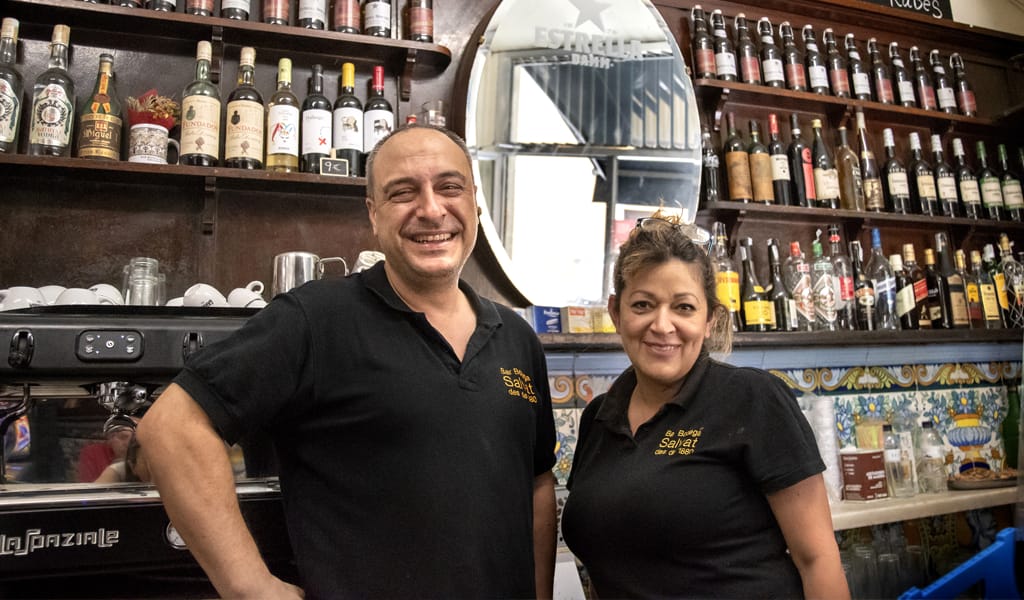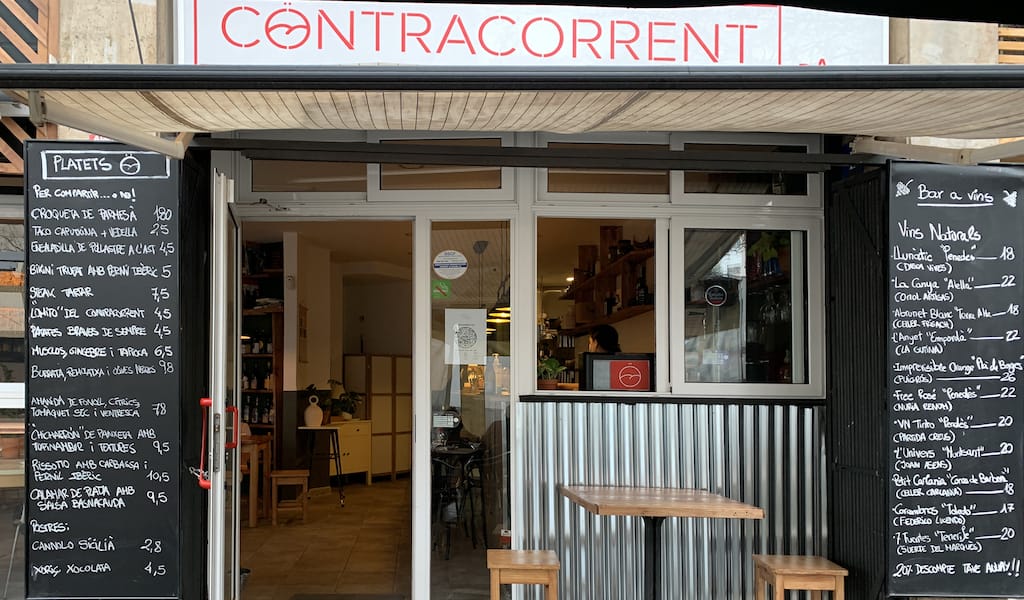Although the Gothic neighborhood in Barcelona’s Ciutat Vella (“Old City”) district is supported by deep foundations – it’s the site of the former Roman village of Barcino – much of the quarter’s more recent history has been swept away by the rise of tourism. The few remaining old shops and businesses are often in a precarious position, exposed to the changing times, and yet they continue to stand strong.
One such spot is Bodega La Palma, which dates back to at least 1909. Back then it was a shop that sold a little bit of everything as well as bulk wine; now it’s a tapas bar, one that serves as a multigenerational meeting point for locals and visitors (when they’re around). For decades a watering hole favored by artists and political militants, this beautiful old-school bodega has been protected as an iconic establishment since 2016, anchoring what’s left of the local social life in el Gòtic.
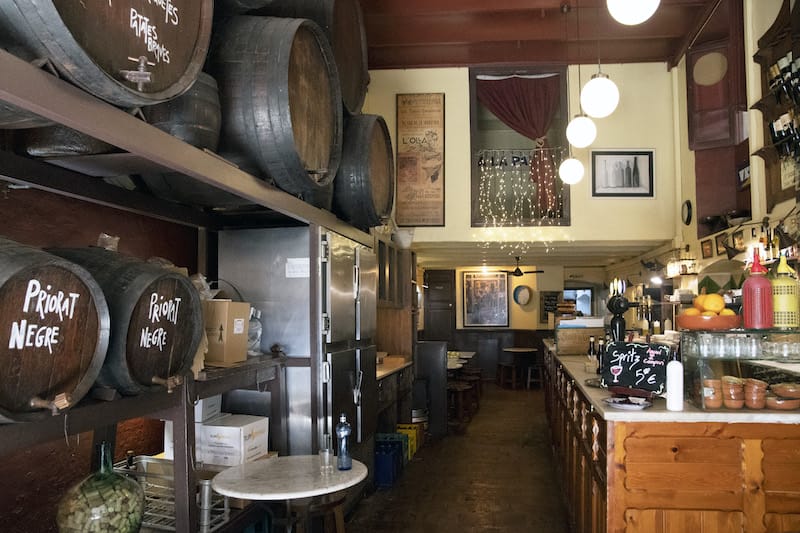
Over the course of the pandemic, the few locals actually living in the area were privileged to have the beautiful and narrow streets of the Gothic quarter all to themselves. But the peace and quiet had dramatic consequences for a great number of shops, bars and restaurants, not only those that catered to tourists but also those that fed the public servants of the nearby City Council and the Government of Catalonia, who were now working from home. While the pandemic hit the whole city, the center took the brunt of it.
According to municipal data, Barcelona city has, on average, recovered around 69 percent of its total pre-pandemic commercial activity. This includes areas where it has been more or less business as usual thanks to a strong neighborhood fabric, and others – those more focused on tourism – where the recovery is still delayed; Ciutat Vella, for example, has recovered only 37.6 percent of its pre-pandemic commercial activity. In response to the city’s many shuttered shops, their blinds dusty from disuse, the Barcelona City Council has a new plan called “Shutters Up!” (Amunt Persianes!/Arriba Persianas!), with different kinds of subsidies to breathe new and more sustainable (i.e. not as dependent on tourism) life into these businesses.
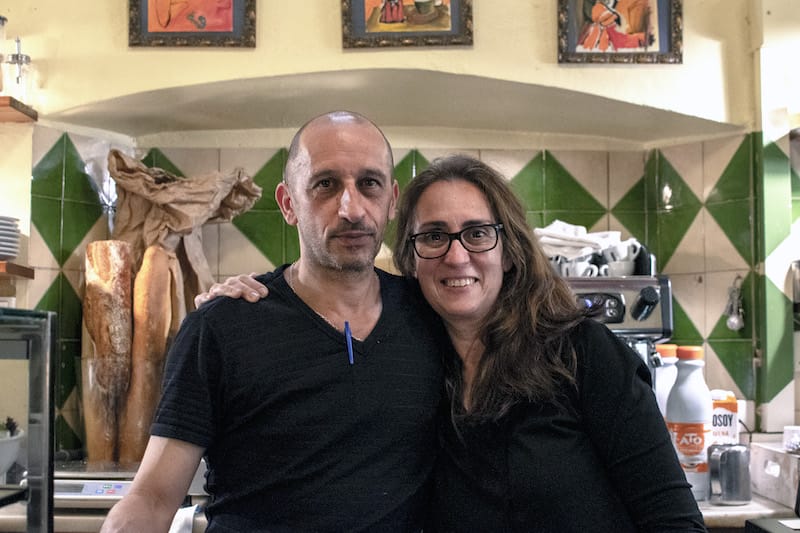
And in the middle of this slow reawakening we find eternal survivors like Bodega La Palma. We sat down with owners Judit Giménez and Albert Rial Pujol to hear about their difficult journey and make a toast with their house vermut to staying in business. Despite the uncertainty and the fact that delivery and takeaway didn’t bring in much revenue, the couple continued to reopen whenever restaurants were permitted to operate. The family-run business had a financial cushion after years of hard work, which made it possible to persevere.
The family-run business had a financial cushion after years of hard work, which made it possible to persevere.
“Anyone who works in the hospitality industry knows that you have to work your fingers to the bone,” Albert says. “But in this case we didn’t have to fight as hard because we had put in the years of hard work and reached a stable point. Though we still put in the effort to the best of our abilities and with a good attitude.” Now, their elderly regulars and a good number of workers are back for the daily lunch specials, and younger and middle-aged clients are returning to enjoy an after-work tapeo.
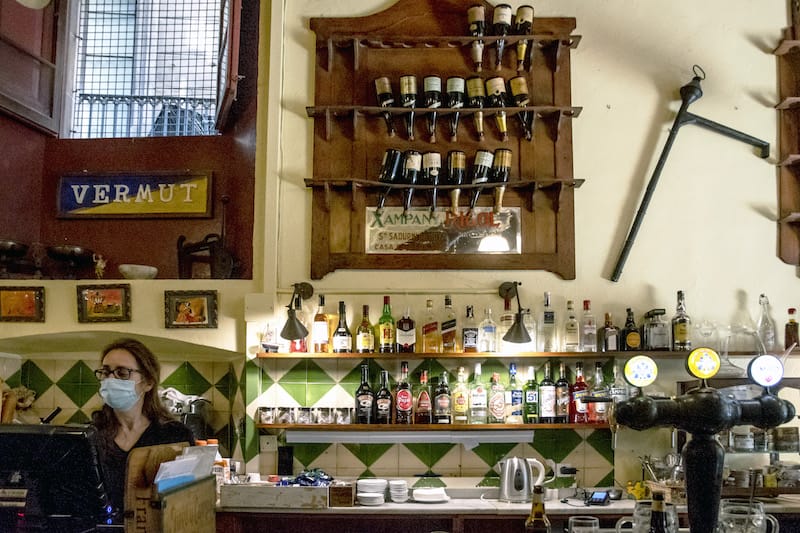
Former regulars themselves, Judit and Albert bought Bodega La Palma in 2005 from Carme Castells and her parents, María and Ferran. This family, well-known in the neighborhood, used to live in the upper floor of the bodega when it was still a store (serving a few humble tapas with a glass of bulk wine). Carme later transformed it into a proper tapas bar, still preserving the original space, including the marble counter and the iconic wooden barrels. She used the tiny house kitchen of their old upper floor to make a few traditional dishes, like the onion and potato omelet that everybody still remembers and the new owners kept on the menu.
Albert explains to us how they are committed to guarding the old soul of Bodega La Palma while also expanding the offerings, including more elaborate dishes and a more extensive list of affordable and good wines (which Albert, a wine expert, has put together himself): “When we took over the place we already knew what Carme used to offer, so we decided to respect some of her plates, like the potato and onion omelet and some cured meats that are part of the bodega. But we had other personal and professional aspirations: keeping the traditional Catalan products, but making something a bit more complex. We wanted to make the traditional Catalan tapa more gourmet. Not invent anything, but search deeper, look for interesting options, like our summer seasonal marinated mackerel in escabeche, with vegetables, that is amazing.”
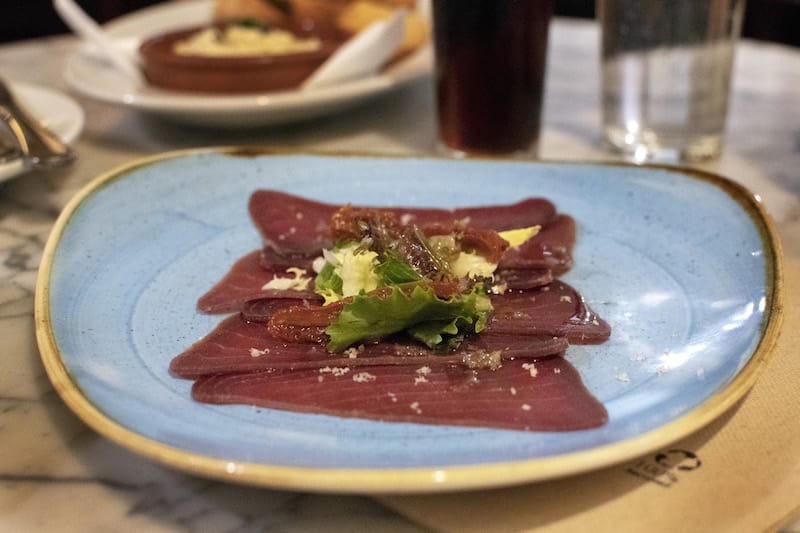
Their patatas bravas is considered one of the best in the city, and their croquettes are heavenly, including the classic jamón, squid in its ink, chicken, and the fantastic pea and mint one. The salad of tomatoes with tuna ventresca and piparras (long green Basque chile peppers) is a party itself. And the filleted salt-cured tuna called moixama, dressed with citrus oil and hazelnut shavings, has a punch of aromatic freshness that brings the fish back to life, while the smoked cod bandrada with a discreet touch of truffles is a soft and creamy dip to enjoy with toasted bread.
From their menu we also loved their popular Catalan cannelloni of tender veal cheeks and black trumpet mushrooms, and the black butifarrón sausage with apple compote. The latter is an aromatic and tasty classic: a few pieces of the black pork butifarra sausage stuffed with rice inside and an intense cumin flavor, softened with the sweet apple compote on top.
Another delight is seeing the bodega’s regulars joking around, coming and going to say hello, grabbing a fresh caña of beer and enjoying the midday sun at the outdoor tables. With every sip of vermut and every bite at La Palma, this historic pillar of neighborhood life is recovering its luster. Step by step, bite by bite, the Gothic is coming back.
 July 13, 2021 Bodega Salvat
July 13, 2021 Bodega Salvat
At Bodega Salvat in the Sants neighborhood, large wooden wine barrels perched on high […] Posted in Barcelona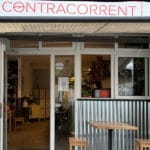 March 5, 2021 Contracorrent Bar
March 5, 2021 Contracorrent Bar
It takes bravery and strength to swim against the flow, traits the Catalan sommelier […] Posted in Barcelona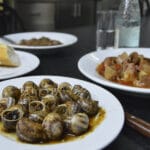 May 13, 2022 Flyby Dining
May 13, 2022 Flyby Dining
Eight, six, or even just four hours in Barcelona’s airport are enough to take a cab or […] Posted in Barcelona
Published on June 10, 2021
Related stories
July 13, 2021
BarcelonaAt Bodega Salvat in the Sants neighborhood, large wooden wine barrels perched on high shelves almost touch the ceiling, looking down on those drinking below with more than 100 years of local history. For several generations of Sants residents, this old bodega, opened in 1880 by the Salvat Vidal family as a bulk wine store,…
March 5, 2021
BarcelonaIt takes bravery and strength to swim against the flow, traits the Catalan sommelier Anna Pla and her partner, the Sicilian chef Nicola Drago, certainly do not lack. The duo opened Contracorrent (“Against the flow” in Catalan) Bar, a natural wine bar and restaurant, in November 2020, amidst a series of pandemic-induced openings and closings.…
May 13, 2022
BarcelonaEight, six, or even just four hours in Barcelona’s airport are enough to take a cab or the Aerobus and jump into the city. The ride from the airport to the center takes around twenty-to thirty-minutes, and is really worth it to escape from the capsule of the airport – and that feeling of being,…















































